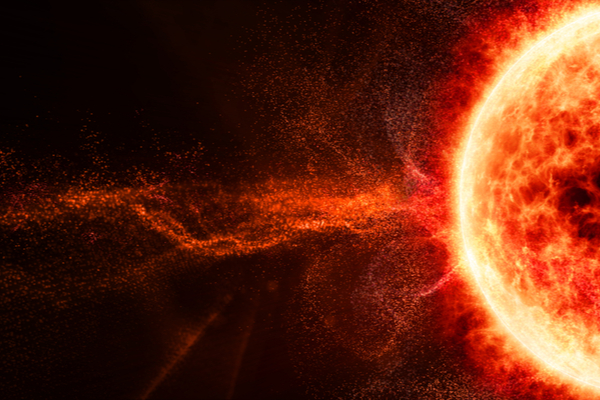The Sun sent out a monster solar flare of high-energy radiation that NASA captured on Thursday in what NOAA Space Weather said was “likely one of the largest” such events ever recorded and the biggest solar flare since 2017.
NOAA scientists said the radio burst was extensive, affecting even the higher frequencies. The combination resulted in one of the largest solar radio events ever recorded, Shawn Dahl of NOAA’s Space Weather Prediction Center said Friday.
The eruption occurred in the far northwest section of the sun. NASA’s Solar Dynamics Observatory caught the action in extreme ultraviolet light, recording the powerful surge of energy as a huge, bright flash. Launched in 2010, the spacecraft is in an extremely high orbit around Earth, where it constantly monitors the sun.
As Axios reports, these powerful bursts of energy “can impact radio communications, electric power grids, navigation signals, and pose risks to spacecraft and astronauts,” per a NASA statement. Radio frequency blackouts were reported across the U.S. after this one.
Although rare, these large outbursts of plasma from the Sun, known as extreme coronal mass ejections (CME), could cause a months-long blackout on Earth, billions of dollars in damage and harm satellites.
Multiple pilots reported communication disruptions, with the impact felt across the country, according to the space weather forecasting center. Scientists are now monitoring this sunspot region and analyzing for another possible CME that might be directed at Earth. This could result in a geomagnetic storm, Dahl said, which in turn could disrupt high-frequency radio signals at the higher latitudes and trigger northern lights, or auroras, in the coming days.
A Lancaster University study published last week found these solar storms can also cause errors on railways, switching train signals from red to green in “the worst case scenario.” On the upside, CMEs can supercharge the auroras and this event has raised the possibility of people in New England seeing the northern lights, CBS News reports.
The Sun’s activity is measured in 11-year cycles and flares are classified by their range and strength, from the weakest, B class, to C, M and the strongest, X. NOAA scientists determined Thursday’s X-class flare as not only the largest of the current Solar Cycle 25, but also the biggest since September 2017. The sun is nearing the peak of its 11-year or so solar cycle. Maximum sunspot activity is predicted for 2025.
—
Photo Credit: Color4260 / Shutterstock.com
